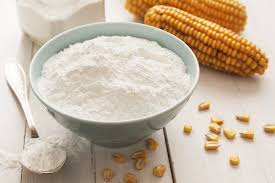This report examines the market potential and feasibility of establishing a maize flour production plant in Nigeria. Maize flour, also known as corn flour, is a staple food ingredient used in various Nigerian dishes such as tuwo, ogi, and akamu.
Market Analysis:
Huge Domestic Demand: Nigeria is Africa's largest producer and consumer of maize, with domestic demand for maize flour outstripping current production capacity.
Underutilized Processing: A significant portion of Nigeria's maize production is consumed unprocessed, presenting an opportunity to increase value-addition through maize milling and flour production.
Rapidly Growing Population: Nigeria's population is projected to grow rapidly, escalating demand for affordable staples like maize flour products.
Feasibility Indicators:
Abundant Raw Material: Nigeria's status as a major maize producer ensures a reliable and relatively low-cost supply of the key raw material.
Favorable Policy Environment: The government has implemented policies and incentives aimed at boosting domestic food processing industries like maize milling.
Existing Infrastructure: Nigeria has transportation and distribution networks that can be leveraged for efficient delivery of maize flour products nationwide.
Competition Landscape: While the market has some existing local maize flour producers and imports, there is room for additional players with competitive pricing and quality offerings.
Opportunities:
Import Substitution Potential: Increased domestic maize flour production can reduce reliance on imported corn flour, saving foreign exchange.
Value Addition: Processing locally grown maize into flour adds value, increases shelf life, and creates economic opportunities.
Market Diversification: Maize flour production can serve diverse customer segments like households, bakeries, food processors and manufacturers.
Employment Generation: The project offers potential for creating jobs across the value chain from milling to packaging and distribution.
Challenges:
Seasonal Maize Production: Adequate storage and stockpiling strategies are needed to mitigate fluctuations in maize supply and prices due to seasonality.
Post-Harvest Losses: Investment in proper storage infrastructure is critical to reduce post-harvest losses of the maize grain.
Energy Costs: Ensuring a reliable, affordable and sustainable source of energy is key for efficient milling operations.
Packaging and Branding: Effective packaging, branding and marketing are vital to make the product appealing and competitive.
Conclusion:
The Nigerian market presents promising potential for a new large-scale maize flour production plant given the huge domestic demand, abundant raw material supply, supportive policy environment and existing infrastructure. However, key challenges like seasonal production fluctuations, energy costs and competition require careful strategic planning. Further detailed technical, market and financial feasibility studies are recommended.
Introduction
2.1 Background
2.2 Objectives of the Study
2.3 Scope and Methodology
Maize Flour Industry Overview
3.1 Definition and Uses
3.2 Global Maize Flour Market Trends
3.3 Nigerian Maize Flour Industry
Market Analysis
4.1 Maize Production in Nigeria
4.2 Demand for Maize Flour
4.2.1 Household Consumption
4.2.2 Industrial Demand
4.3 Supply Situation
4.3.1 Domestic Production
4.3.2 Imports
4.4 Pricing Trends
4.5 Distribution Channels
4.6 SWOT Analysis
Proposed Project Details
5.1 Project Location
5.2 Production Process
5.3 Plant Capacity and Machinery
5.4 Raw Material Sourcing
5.5 Product Packaging and Branding
5.6 Target Markets
Technical Analysis
6.1 Site and Infrastructure
6.2 Utilities and Energy Requirements
6.3 Environmental Considerations
6.4 Quality Control
Management and Organizational Structure
Financial Analysis
8.1 Project Cost and Investment
8.2 Working Capital Requirements
8.3 Revenue Projections
8.4 Profitability Analysis
8.5 Break-even Analysis
8.6 Investment Appraisal
Risk Analysis
9.1 Raw Material Risks
9.2 Operational Risks
9.3 Market Risks
9.4 Regulatory and Policy Risks
9.5 Risk Mitigation Strategies
Key Success Factors and Recommendations
Conclusion
Appendices
Appendix A: Supporting Data and Calculations
Appendix B: Relevant Policies and Regulations
Appendix C: List of Machinery and Suppliers
$100 ( N150,000)
Get your conditional loan offer: admin@fundxperts.com
Contact: admin@fundxperts.com

